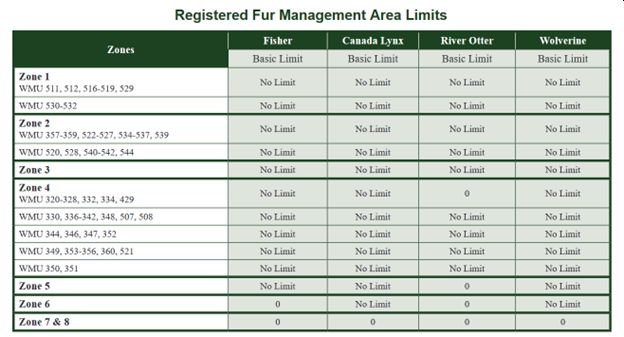
AWA Statement: Unacceptable Removal of Trapping Limits on Furbearing Animals
November 6, 2024
- •
- •
- •
Alberta Minister of Forestry and Parks Todd Loewen has quietly removed yet another restriction that protected a sensitive and struggling species. The change was made without public consultation or announcement.
Alberta Wilderness Association (AWA) recently learned the trapping limits imposed on furbearing animals in Registered Fur Management Areas have been removed. This affects fisher, Canada lynx, river otter, and wolverine.
The impact to wolverine is particularly concerning, given that the species is declining. Trapping, one of the causes of their decline, was already considered unsustainable in British Columbia and Alberta.
This change is unacceptable. It is a regression on decades of sustainable management practices. There is no science behind it, and it was done without public consultation or even knowledge. This change could be devastating to these furbearing animals, especially wolverine.
In Alberta, wolverines are considered a Data Deficient species, and it has been included on the list of species that may be at risk. Wolverines are elusive and found in low densities, making population estimates difficult, although declines have been reported in the southern ranges, and COSEWIC has assessed the species as “Special Concern.” The last population estimate for Alberta, reported in 2003, was less than 1,000 breeding individuals. In 2019, a study recommended trapping be reduced by 50 percent or more to allow for population recovery.
Where wolverine trapping occurs, trapping is often recorded as the main cause of wolverine mortality. Previously, the Alberta Guide to Trapping Regulations limited wolverine harvest to one per trapper in each Registered Fur Trapping Management Area. Lifting this limit means there will be stronger harvest pressures on wolverine, and likely higher mortality. Wolverine are a slow-growing species, and population recovery is difficult, particularly as habitat loss and climate change are also threatening this species.
While wolverine is the most vulnerable of the species these new restrictions apply to, overharvest will impact all the affected species. River otters and Canada lynx, both affected by the new regulations, were nearly eradicated from much of their range in the 1800-1900s due to harvest pressure. Data on fishers show they are already failing to meet reproduction targets and allow for sustainable trapping. Trapping limits were imposed to allow sustainable harvest, and the reversal of these limits could mean many species are once more hunted to extinction.
In a time when there is global attention on halting and reversing biodiversity loss, Alberta’s policies are promoting further species loss. As with other changes to hunting and trapping regulations, these new regulations will increase harvest pressures and could devastate vulnerable populations. At this rate, the wilderness that many Albertans are so proud of could soon be empty.
For more information, contact Ruiping Luo (403-971-1240, rluo@abwild.ca)

